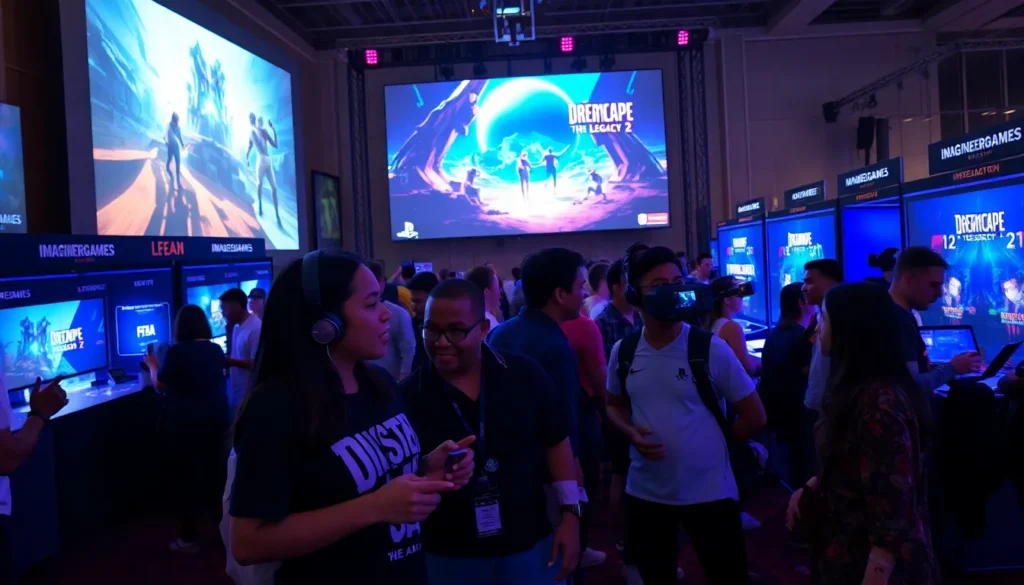Table of Contents
ToggleHave you ever wondered why your favorite game gets less love in other parts of the world? Regional preferences in WebBizMagnet games reveal fascinating insights into the gaming habits shaped by culture, economics, and the demographics of various regions. Buckle up, because we’re diving into a gaming world where understanding your audience is the secret sauce for success, and spoiler alert, it’s not all about just slaying dragons.
Understanding Regional Preferences

Cultural Influences on Gaming Choices
Cultural backgrounds significantly shape the kinds of games people enjoy. Families in North America may gather around their screens for a lively action-packed experience, while in Japan, the story-driven role-playing games dominate living rooms. Each region boasts its distinctive gaming culture, driven by historical factors and societal practices. In some cases, game creators tap into fairy tales or folklore unique to a region’s identity, leading to more immersive experiences.
Economic Factors Affecting Game Popularity
Economic standing also plays a crucial role in game preferences. In wealthier countries, consumers often seek high-production games with complex graphics and engaging narratives. Meanwhile, developing nations may favor mobile games that require lower investments and can be played anytime on handheld devices. Understanding these economic variables allows developers to adjust their strategies effectively, maximizing player engagement across regions.
Demographics and Gaming Trends
Look beyond the surface to see how demographics influence gaming. Factors such as age, gender, and even employment status can dictate preferences. For instance, younger players might gravitate towards fast-paced Battle Royale games, while older demographics often prefer strategy-based simulations that engage their critical thinking skills. Tailoring games to fit the demographic profile of a region can mean the difference between massive success and utter failure.
Popular Genres by Region
North America: Action and Adventure
When it comes to North America, action and adventure genres reign supreme. Iconic franchises like “Call of Duty” and “The Legend of Zelda” capture imaginations across the continent. Players immerse themselves in intense storytelling and heart-thumping gameplay, contributing to their popularity. Developers here often focus on creating games that allow for social interaction, breeding communities based on shared interests.
Europe: Strategy and Simulation
Over in Europe, the gaming zeitgeist leans toward strategy and simulation games. Titles like “Civilization” and “The Sims” thrive under a sophisticated gaming culture that values depth and intellectual engagement. These games allow players to forge their own paths and test their strategic capabilities, becoming a perfect fit for the European sensibility.
Asia: Mobile and Casual Gaming
Asia, on the other hand, is a mobile gaming juggernaut. Casual games such as “Candy Crush” and multiplayer battle arenas like “Mobile Legends” dominate the landscape. Easy access to smartphones has catalyzed this trend, with developers in the region focusing on games that can be quickly picked up and enjoyed on-the-go.
Market Strategies for Regional Engagement
Localization and Translation Challenges
Localization is far more than just translating words: it’s about adapting the entire gaming experience to fit cultural nuances. Developers must pay attention to everything from idioms to local customs to craft a relatable narrative. Errors in this process can deter players, so investing in professional localization services could be a game-changer.
Tailoring Marketing Campaigns
Marketing strategies must also be locally relevant. What works in one market may not resonate in another. Understanding regional holidays, icons, and language customs can help create more engaging campaigns. For example, running a promotion during local festivals can significantly boost visibility, making marketing efforts not just relevant but also timely.
Collaboration with Local Developers
Collaborating with local developers can unlock invaluable insights. These partnerships can provide grassroots perspectives on what’s trending in local gameplay and preferences. Not only do these alliances enhance a game’s quality, but they also bridge the gap between the developer’s vision and regional expectations.
Case Studies of Successful Regional Games
Examining Pioneering Titles
Take a look at successful titles like “Genshin Impact”, a game that transcended regional barriers by effectively appealing to various cultures. By incorporating a mix of Eastern and Western gaming styles, it attracted players globally. Such examples underscore the potential for bridging cultural gaps within gaming.
Impact of Regional Game Events
Events like the D.I.C.E. Summit or Tokyo Game Show allow developers to analyze regional trends firsthand. Networking opportunities at these events foster collaboration and knowledge sharing, offering insights that can drive future games toward success. Observing what captures local attention at these events has been a goldmine for many game developers.
Future Trends in Regional Preferences
Emerging Markets and Opportunities
Emerging markets, such as Africa and South America, present incredible opportunities for developers to expand their reach. With growing internet accessibility and mobile penetration rates, these regions are becoming crucial players in the gaming landscape. Tailored games that resonate with local cultures can enhance player satisfaction and loyalty, making it a win-win situation for everyone involved.
The Role of Technology in Shaping Preferences
Advancements in technology will continue to influence player preferences. Innovations such as virtual reality and augmented reality offer new experiences that could sway regional choices dramatically. Keeping an eye on emerging technologies can help developers anticipate shifts in player interests and adapt accordingly.




